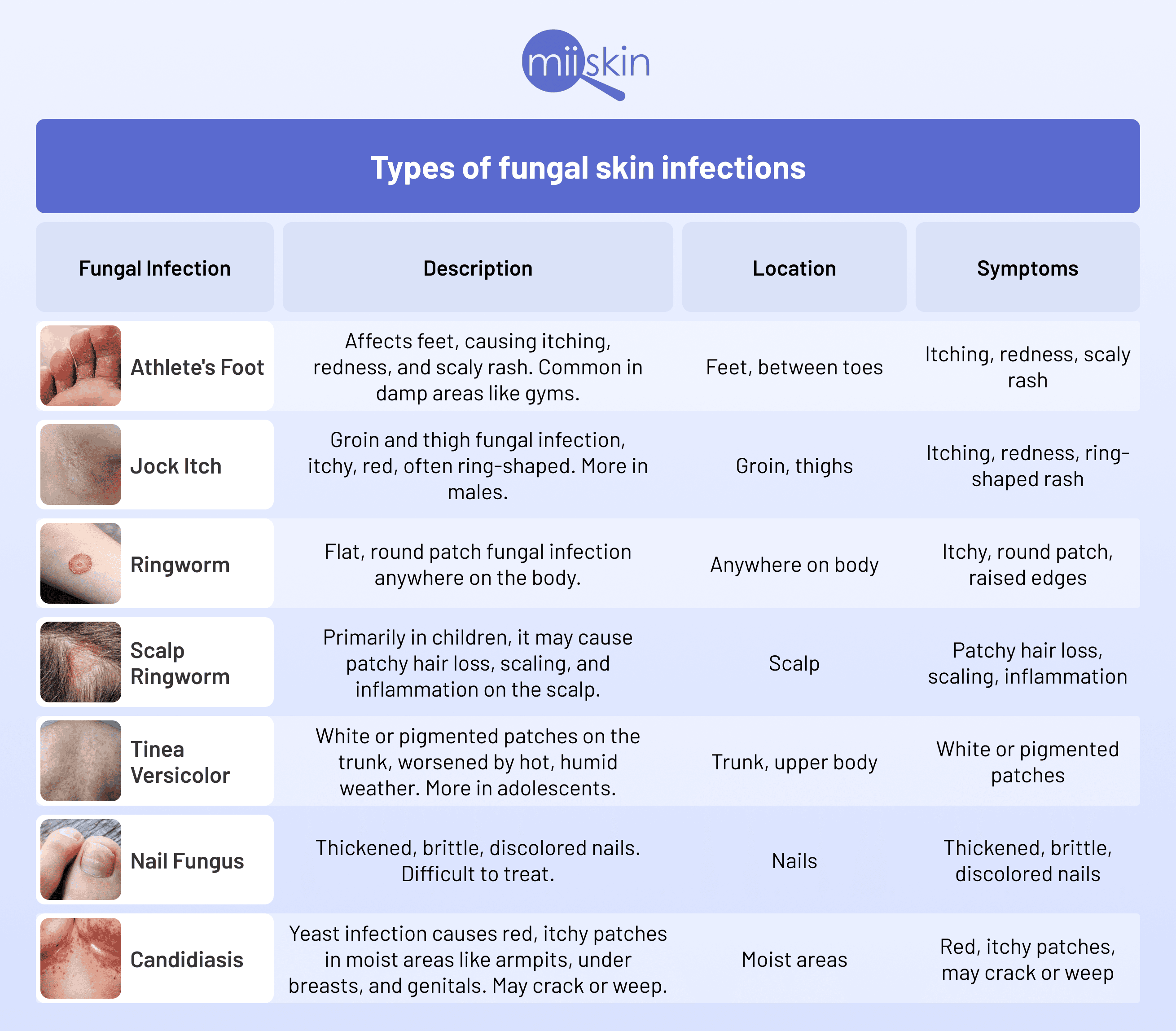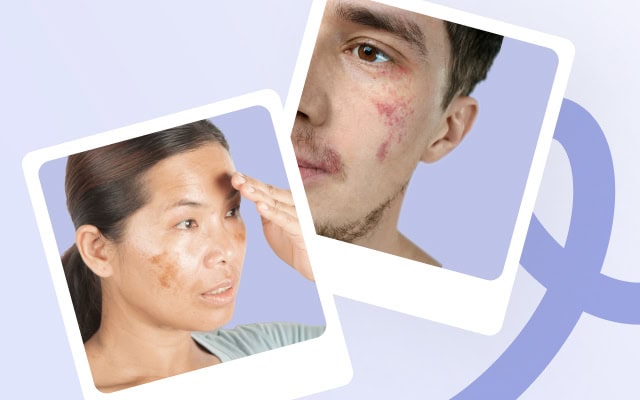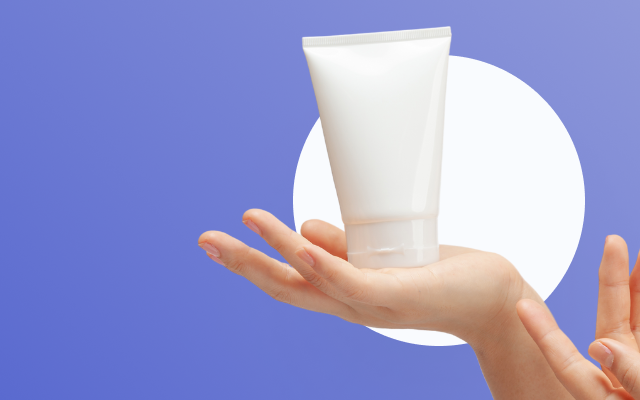How to get an antifungal cream for your skin?
Dr. Ana Luisa Cabrera, board-certified dermatologist, talks about the most commonly used antifungal creams, ointments and oral treatment to get rid of fungal infections on the skin.
Table of Content:
How are fungal infections treated? | When to use OTC creams? | Get a prescription | List of antifungal creams | Antifungal pills | About fungal infections | What causes fungal infections? | Types | Skin conditions that look like fungal infections | FAQ
Our commitment to producing high-quality content:
The information presented in this article is based on scientific research and the professional advice of our Content Medical Reviewers, who are experts in the field of Dermatology. How we write our content →
How are fungal infections treated?
Dr. Cabrera says that the treatment for fungal infections on the skin typically involves antifungal creams or ointments. For more severe cases, particularly those which are more widespread or have not responded to topical treatment, you may need to take an oral antifungal medication.
When to use an over-the-counter (OTC) antifungal cream?
Over-the-counter antifungal creams are usually used for mild skin fungal infections. However, Dr. Cabrera says that you need to keep these points in mind:
- Confirm your symptoms are fungal; if you’ve successfully used an antifungal cream before for the same symptoms, you can use it again.
- Choose a cream with active ingredients like clotrimazole, miconazole, terbinafine, or tolnaftate.
- Apply the cream as directed on the package, usually once or twice daily for 1 to 4 weeks.
- Ensure the affected area is clean and dry before application, as moisture can encourage fungal growth.
- Monitor the infection’s response to the cream and continue using it for the full prescribed duration, even if symptoms improve early.
- See a healthcare provider if there’s no improvement after a week or two, if the infection spreads, or if it frequently recurs, as you may need a stronger prescription treatment or your symptoms may not be fungus-related at all.
How to get a prescription for an antifungal cream or tablet?
If you have tried over-the-counter cream for the fungal infection on your skin and it hasn’t worked, you probably need stronger medication or your problem is not related to a fungal infection. The independent dermatologists working via Miiskin can give you a correct diagnosis and adequate treatment with a photo-consultation which only costs $59. You will get an answer in less than 2 working days.
What antifungal cream or ointment is best?
Dr. Cabrebra says that the most widely used antifungal ointments, creams, and sprays contain active ingredients such as clotrimazole, miconazole, terbinafine, and ketoconazole. These are available over-the-counter and are effective for treating various fungal infections like athlete’s foot, jock itch, ringworm, and yeast infections.
Clotrimazole
- Active Ingredient: Clotrimazole
- Uses: Treats yeast infections, athlete’s foot, jock itch, ringworm
- Formulation: Cream, lotion, powder, lozenge
- Brand names: Lotrimin AF, Gyne-Lotrimin, Canesten
- Generic: Available
- Prescription or OTC: Both, depending on product’s concentration
- Oral version: Yes, as a lozenge for oral thrush1
Ketoconazole
- Active Ingredient: Ketoconazole
- Uses: Fungal infections such as athlete’s foot, ringworm, candidiasis, dandruff
- Formulation: Ketoconazole cream, Ketoconazole shampoo, foam, gel
- Brand names: Nizoral, Extina, Xolegel
- Generic: Available
- Prescription or OTC: Both, cream and shampoo available OTC and with a prescription
- Oral Version: Yes, tablets and oral suspension2
Terbinafine
- Active Ingredient: Terbinafine
- Uses: Nail fungus, ringworm, jock itch, athlete’s foot
- Formulation: Cream, gel, spray, granules
- Brand names: Lamisil, Terbinex
- Generic: Available
- Prescription or OTC: Both, topical forms often are OTC and prescription
- Oral Version: Yes, tablets and granules3
Miconazole
- Active Ingredient: Miconazole
- Uses: Yeast infections, athlete’s foot, jock itch, ringworm
- Formulation: Cream, powder, spray, suppository
- Brand names: Monistat, Micatin, Lotrimin AF
- Generic: Available
- Prescription or OTC: OTC
- Oral Version: No, not for systemic infections4
Econazole
- Active Ingredient: Econazole
- Uses: Skin and nail fungal infections
- Formulation: Cream, foam
- Brand names: Spectazole
- Generic: Available
- Prescription or OTC: Prescription
- Oral Version: Not available5
Sulconazole
- Active Ingredient: Sulconazole
- Uses: Treats athlete’s foot, jock itch, and ringworm
- Formulation: Cream, solution
- Brand names: Exelderm
- Generic: Available
- Prescription or OTC: Prescription
- Oral Version: Not available6
Oxiconazole
- Active Ingredient: Oxiconazole
- Uses: Skin fungal infections including athlete’s foot, jock itch, ringworm
- Formulation: Cream, lotion
- Brand names: Oxistat
- Generic: Available
- Prescription or OTC: Prescription
- Oral Version: Not available7
What is the best oral antifungal medication?
Dr. Cabrera says that the most widely prescribed oral antifungal medications (tablets) are fluconazole, itraconazole, terbinafine, and ketoconazole. These tablets are used to treat severe or systemic fungal infections, such as candidiasis, aspergillosis, and onychomycosis, providing effective management of these conditions.
Fluconazole
- Active Ingredient: Fluconazole
- Uses: Systemic and severe fungal infections, yeast infections
- Formulation: Tablets, injection, oral suspension
- Brand names: Diflucan
- Generic: Available
- Prescription or OTC: Prescription
- Topical Version: Not available8
Itraconazole
- Active Ingredient: Itraconazole
- Uses: Systemic fungal infections, nail fungus
- Formulation: Capsules, oral solution
- Brand Names: Sporanox, Onmel
- Generic: Available
- Prescription or OTC: Prescription
- Topical Version: Not available9
Griseofulvin
- Active Ingredient: Griseofulvin
- Uses: Scalp, skin, and nail fungal infections
- Formulation: Tablets, oral suspension
- Brand Names: Grifulvin V, Gris-PEG
- Generic: Available
- Prescription or OTC: Prescription
- Topical Version: Not available10
About fungal infections
What are fungal infections on the skin?
According to Dr. Ana Luisa Cabrera, board-certified dermatologist, fungal skin infections, (also known as dermatomycoses) are conditions caused by the excessive proliferation of fungi on the outer layer of the skin, nails, or hair. These fungi can cause a variety of symptoms, including redness, itching, flaking, skin rashes, and in some cases, blister formation or thickening of the nails. Cutaneous fungal infections (fungi on the skin) are common and can affect people of all ages and health conditions, but they tend to thrive in warm and humid environments.
What causes fungus fungal infections?
Fungal infections can arise due to various factors, such as warm and humid environments, direct contact with fungi, weakened immune systems, skin injuries, prolonged use of antibiotics, and underlying medical conditions such as diabetes. Maintaining good personal hygiene and avoiding contact with contaminated surfaces can help reduce the risk of developing fungal infections on the skin.
Types of fungal skin infections

Athlete’s Foot (Tinea Pedis)
This infection affects the skin on the feet, particularly between the toes, causing itching, redness, and sometimes a scaly rash . It’s commonly picked up in damp communal areas like gym locker rooms or swimming pools.
Jock Itch (Tinea Cruris)
A fungal infection of the groin and thighs, presenting as an itchy, red, often ring-shaped rash. It’s more common in men and adolescent boys.
Ringworm (Tinea Corporis)
Despite its name, ringworm doesn’t involve an actual worm but rather a fungal infection that appears anywhere on the body as a flat, round patch. It may be itchy and the edges might be slightly raised.
Scalp ringworm (Tinea Capitis)
This affects the scalp, hair shafts, and hair follicles, primarily in children. It can cause patchy hair loss, scaling, and inflamed areas.
Tinea Versicolor (Malassezia)
Tinea versicolor usually affects the trunk and upper extremities with white or reddish or pigmented areas, caused by a fungus called malassezia. It is most common in adolescents and young adults but can also occur in children. Hot and humid weather, sweat, and the use of topical skin oils could worsen this problem. Malassezia fungus can also be found in the scalp (dandruff)
Nail fungus (Onychomycosis)
A fungal infection that affects the nails, making them thickened, brittle, and discolored. This infection can be stubborn and difficult to treat.
Candidiasis
This yeast infection can affect the skin, causing rashes in moist areas like the armpits, under the breasts, and around the genitals. It is characterized by red, itchy patches that may also crack or weep.
What other skin conditions can look like fungus infection on the skin?
Dr. Cabrera says that there are several skin conditions that can mimic fungal infections in appearance, leading to misdiagnosis without proper testing. Here are some common conditions that may resemble fungal infections on the skin:
- Psoriasis: This chronic autoimmune condition causes rapid skin cell turnover, leading to thick, scaly patches that can sometimes look similar to ringworm.
- Eczema (Atopic Dermatitis): Eczema causes red, itchy, and inflamed patches of skin. The rough, leathery skin texture can sometimes resemble a fungal infection.
- Contact Dermatitis: This is an allergic reaction to something that has touched the skin. The resulting rash, redness, and blisters can mimic fungal infections like athlete’s foot or jock itch.
- Pityriasis Rosea: This skin disorder causes a large, scaly, pink patch on the back or abdomen, followed by additional patches that can look like a fungal infection.
- Seborrheic Dermatitis: This condition causes flaky scales and red skin, primarily on the scalp and face, and can be mistaken for a fungal infection due to its appearance and itchiness.
- Granuloma annulare: Is an inflammatory condition that classically presents in a form of a reddish elevated ring, itchy, but without scale and can be easily mistaken for ringworm
- Lichen Planus: This condition features purplish, itchy, flat bumps on the skin, which can sometimes be confused with the lesions of ringworm.
Frequently asked questions about antifungal treatment creams
What is an OTC antifungal cream?
Dr. Cabrera says that an OTC antifungal cream is a non-prescription cream used to treat fungal skin infections. These creams contain active ingredients such as clotrimazole, miconazole, or terbinafine, which help eliminate fungi by disrupting their cell membranes or inhibiting their growth. They are commonly used for conditions like athlete’s foot, jock itch, ringworm, and yeast infections.
What is the strongest antifungal over-the-counter?
Dr. Cabrera says that among over-the-counter (OTC) antifungal products, terbinafine is often considered one of the strongest available. It is particularly effective against dermatophyte fungi, which cause conditions such as athlete’s foot, jock itch, and ringworm. Terbinafine is available in various forms, such as creams, gels, and sprays, and is marketed under brand names like Lamisil. It works by killing the fungus rather than just inhibiting its growth, making it a potent choice for treating fungal skin infections.
What kills skin fungus fast?
Dr. Cabrera says that prescription-strength terbinafine cream is considered one of the fastest-acting antifungal creams for skin infections. Fluconazole is considered one of the fastest oral antifungal medications.
Which is better, Lamisil or Lotrimin?
Dr. Cabrera says that Lamisil is generally more effective for fungal infections caused by dermatophytes, while Lotrimin is preferred for yeast infections and is gentler for sensitive skin areas.
Is there a pill that kills fungus?
Dr. Cabrera says that oral antifungal medications such as fluconazole, itraconazole, and terbinafine are used to treat fungal infections on the skin that have not responded to topical treatment or that are more widely spread throughout the body.
Are antifungal pills better than cream?
Dr. Cabrera says that topical antifungal creams are preferred for superficial skin infections as they are applied directly to the affected area. Although antifungal pills act faster, they are generally only used for more severe fungal infections that are difficult to treat topically or that have not responded to topical treatment.
Can I get antifungal pills over the counter?
No, antifungal pills require a prescription from a healthcare provider. Over-the-counter antifungal medications are usually limited to topical treatments.
Is Monistat cream an antifungal?
Yes, Monistat cream is an antifungal. It contains miconazole, which is used to treat yeast infections of the skin and vagina. It works by weakening the fungal cell wall, killing the fungus and treating the infection.
Is hydrocortisone an antifungal?
No, hydrocortisone is not an antifungal. It is a corticosteroid used to reduce inflammation, redness, and itching. However, it does not treat fungal infections and can actually worsen them by suppressing the immune response in the affected area.
Is Neosporin an antifungal ointment?
No, Neosporin is not an antifungal ointment. It is an antibiotic ointment designed to prevent or treat bacterial infections, not fungal infections.
Lee éste artículo en Español Hongos en la piel: Causas, síntomas y tratamientos
Key article points
- Definition and causes: Skin fungi, or cutaneous fungal infections, are caused by the proliferation of fungi on the skin, nails, or hair. Factors such as warm and humid environments and weakened immune systems can contribute to their appearance.
- Common types
- Athlete’s foot: Affects the skin of the feet.
- Jock itch: Affects the groin and thighs.
- Ringworm: Can appear anywhere on the body.
- Scalp ringworm: Affects children.
- Pityriasis versicolor: Affects the trunk and limbs.
- Onychomycosis: Affects the nails.
- Candidiasis: Affects moist areas such as armpits and genitals.
- Symptoms: Redness, itching, scaling, rashes, blisters, and thickening of the nails.
- Similar conditions: Other skin conditions that may resemble skin fungi include psoriasis, eczema, contact dermatitis, pityriasis rosea, seborrheic dermatitis, granuloma annulare, and lichen planus.
- Treatment: Use of antifungal creams and ointments with ingredients such as clotrimazole and miconazole. Severe cases may require antifungal pills.
Do you suspect you have a fungal infection? Request treatment now!
Article References:
https://www.ncbi.nlm.nih.gov/books/NBK560643/
https://www.ncbi.nlm.nih.gov/books/NBK559221/
https://www.ncbi.nlm.nih.gov/books/NBK545218/
https://www.ncbi.nlm.nih.gov/books/NBK551581/
https://my.clevelandclinic.org/health/drugs/18410-econazole-skin-cream
https://www.mayoclinic.org/drugs-supplements/sulconazole-topical-route/proper-use/drg-20066112
https://www.ncbi.nlm.nih.gov/books/NBK537158/
https://www.ncbi.nlm.nih.gov/books/NBK557874/
Skin conditions and treatments
Articles reviewed by dermatologists
Facial treatment for seborrheic dermatitis
How to get rid of rosacea permanently?
How to calm a rosacea flare-up fast?
Spongiotic dermatitis: What is it and what is the best treatment?
A dermatologist’s guide to psoriasis medication






